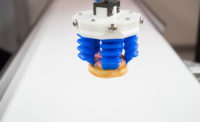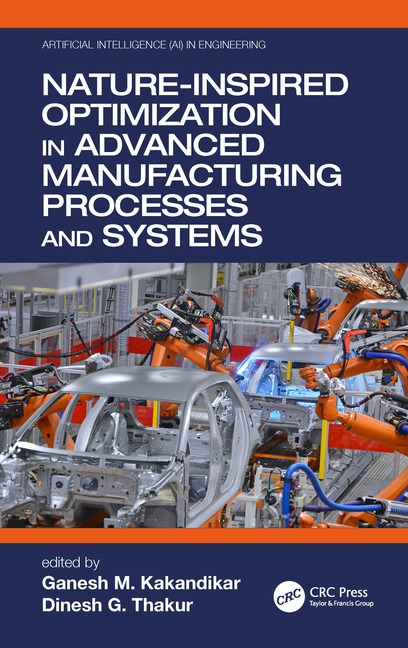Soft Robots Feature Advanced Senses

This soft robotic gripper is embedded with sensors that can detect movement, pressure, touch and temperature.
CAMBRIDGE, MA—Engineers at Harvard University have developed soft robots that can sense touch, pressure, movement and temperature. The devices feature embedded sensors that were inspired by nature and the human body’s sensory capabilities.
Integrating sensors within soft robots has been difficult in the past, because most sensors, such as those used in traditional electronics, are rigid. To address this challenge, the engineers enveloped an organic ionic liquid-based conductive ink within the soft elastomer matrices that comprise most soft robots. The material can be 3D printed.
To fabricate their device, the Harvard engineers used a 3D printing technique developed at the Wyss Institute for Biologically Inspired Engineering. Embedded 3D printing seamlessly and quickly integrates multiple features and materials within a single soft body.
According to Robert Wood, Ph.D., a professor of electrical engineering at the School of Engineering and Applied Sciences, the research effort “represents a foundational advance in soft robotics. Our manufacturing platform enables complex sensing motifs to be easily integrated into soft robotic systems.
“To date, most integrated sensor-actuator systems used in soft robotics have been quite rudimentary,” explains Wood. “By directly printing ionic liquid sensors within these soft systems, we open new avenues to device design and fabrication that will ultimately allow true closed-loop control of soft robots.”
“The function and design flexibility of this method is unparalleled,” claims Wood. “This new ink, combined with our embedded 3D printing process, allows us to combine both soft sensing and actuation in one integrated soft robotic system.”
To test the sensors, Wood and his colleagues printed a soft robotic gripper comprised of three soft fingers. They tested the gripper’s ability to sense inflation pressure, curvature, contact and temperature. In addition, the engineers embedded multiple contact sensors so the gripper could sense light and deep touches.
“Soft robotics are typically limited by conventional molding techniques that constrain geometry choices, or, in the case of commercial 3D printing, material selection that hampers design choices,” says Wood. “The techniques developed in [our lab] have the opportunity to revolutionize how robots are created—moving away from sequential processes and creating complex and monolithic robots with embedded sensors and actuators.”
In the future, Wood and his colleagues hope to harness the power of machine learning to train their robots to grasp objects of varying size, shape, surface texture and temperature.
Looking for a reprint of this article?
From high-res PDFs to custom plaques, order your copy today!







